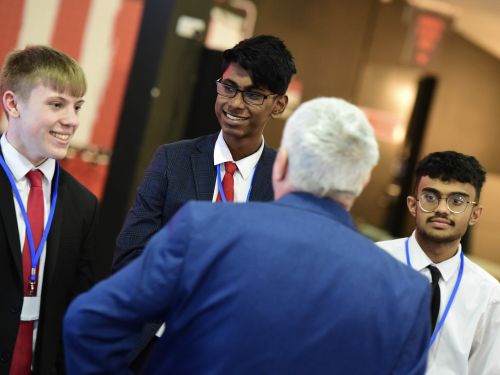LINCOLNSHIRE TO LEAD THE WAY ON AGRICULTURAL ROBOTICS

Lincolnshire is on course to become a world leader in agricultural robotics, an Insider event has heard.
The Lincoln Agri-Robotics centre at the University of Lincoln, opened in 2019, is the largest facility of its kind in Europe, and is now on track to become the global leader.
Speaking at Insider’s Food Production in the Digital Age online forum, which was sponsored by Lincolnshire County Council and Team Lincolnshire, Martin Collison, agri-tech specialist at Greater Lincolnshire Local Enterprise Partnership (LEP), said: "It's growing at pace because of business demand and because the government has invested in it. There’s huge potential in robotics in the years ahead."
The growth of the centre highlights Lincolnshire’s key role in the agritech sector, which is attracting major investment.
Tom Blount, director of Lincoln Science and Innovation Park, said Lincolnshire was using more than a century of knowhow in agriculture to spearhead the digitalisation of food production and processing.
"Lincolnshire has a huge amount of agricultural heritage,” he said. “The first agricultural machinery was built here in the 19th century. But what’s been missing in previous decades is a critical mass of people clustered together who can attract money and skills. That’s starting to change, with businesses like Saga Robotics investing here."
Norway-based Saga has invested significantly in Lincolnshire in recent years, working in partnership with the University of Lincoln. One of its robots treats strawberry crops blighted by fungi infections by exposing them to UV-C light, while another has been designed to pick strawberries.
"There are major labour issues in the agricultural sector, and using UV-C light also has health and safety issues for humans. So these robots provide a more efficient alternative," said Halvard Grimstad, Saga’s UK chief operating officer.
Meanwhile, Vee Gururajan, innovation director of leading Lincoln-based potato supplier Branston, explained how the company’s development arm had created a robot which could estimate crop yield while potatoes were still growing in the ground.
The forum also heard that half of all fish for the UK market is processed in Greater Lincolnshire, a legacy of its 50-mile North Sea coastline.
Technology is playing a key role in the sustainability of fisheries and in preventing illegal fishing, and this is all centred on Lincolnshire, said Marcus Coleman, chief executive of the Seafish Industry Authority.
"Fish is the most globally traded product and because of that's very hard to know where it’s come from," said Coleman. "Now we have digital tools to help trace the origins of fish. Four companies in the Grimsby area have been part of global efforts to define standards on digital traceability."
Coleman added that businesses in the area had developed technology which ensured very little waste during the processing of fish.
"It's all about efficiency and yield and making the most of the fish,” he said. “Thanks to what the companies have done using robotics and infrared technology fish can be cut and processed in the most efficient way. Work is also taking place on using inedible parts of fish for other uses such as medical and textile sector, which means very little is wasted."
Sarah Louise Fairburn, chair of Greater Lincolnshire LEP’s Food Board, said innovation would need to speed up if the area was to continue to compete globally.
"It's mind blowing what we’re doing in Greater Lincolnshire in terms of innovation,” she said. “But we need to keep ahead of the game. Because of the challenges we now have with Covid, the food sector in Greater Lincolnshire is going to have to be more ruthlessly efficient than ever to stay competitive."
Sign up to Team Lincolnshire
As well as helping promote Lincolnshire, Team Lincolnshire members benefit from a great range of services and support.
Contact us
